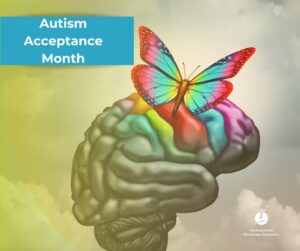Aggressive, inappropriate, and anti-social behaviours are some of the biggest barriers to inclusion for people with developmental disabilities in school, community, and the workforce. Such behaviours are also very hard on families. All people who demonstrate extreme behaviours, whether they have developmental disabilities or not, challenge inclusion and community acceptance.
There are some behaviours that people generally will not tolerate – usually those that cause harm to self or others. Behaviours like hitting, pinching, kicking, sexually stalking, attacking, yelling, screaming or spitting on others. These behaviours can get kids kicked out of school, adults fired from their job, jailed, and rejected from most social groups. Maladaptive behaviours are also a huge barrier to learning because they make concentration almost impossible.
One big thing that most people do not understand about behaviour is that some behaviours voluntary and some are not within one’s control. Some people can control their swearing, for example, but people with Tourette’s Syndrome cannot. Tourette’s causes involuntary tics, behaviours and vocalizations. When people perceive or hear swearing, they automatically assume the person has control over their behaviour. Most people don’t even know about Tourette’s Syndrome. Virtually all involuntary behaviours have biological causes. Learned, controllable or voluntary behaviour problems usually have psychological or environmental causes.
It is very difficult to understand that some behaviours people display are not under their control, hence the social stigma placed on people with mental illness and some people with developmental disabilities. So the first question we must ask when dealing with someone acting in a strange manner is “What is driving this behaviour?” The first place to look is biology. Could the person be in pain? People with poor verbal abilities frequently cannot communicate that they are ill. Many behaviour problems disappear with a trip to the dentist or doctor.
Once physical causes are ruled out, the next question to answer: “Is this behaviour the result of a mental illness or is it a learned behaviour?” If the behaviour is due to a mental illness then the behaviour may be involuntary. If this is the case, diagnosis and treatment will usually point to medications that can help. This can take a while because psychoactive medication takes time to work and changes may be necessary due to negative side-effects.
If there are no physical or neurological/psychiatric conditions driving behaviour, then the behaviour is probably learned, or a product of the individual’s environment. Only when behaviour is voluntary, under the person’s control, will it be amenable to behaviour management or ABA strategies. These interventions are sensitive to the interactions individuals have with their environment and the feedback loops created when stimulus-response chains are reinforced over long periods of time. If a little boy whines and cries at the store because he wants a treat and his mother buys him a treat every time this happens to get him to stop, it is no surprise that he will continue his whining, crying behaviour when they go to the store together because this behaviour has been regularly rewarded. A behaviour management plan might involve Mom firmly saying “no” and taking him out of the store every time he acts up. By doing this, the behaviour is no longer reinforced and will stop over time.
Most people believe and assume that all our behaviour is under our control. Try concentrating on a simple task when you have to really, really go to the bathroom. Your performance will be sub-optimal because your mind is involuntarily somewhere else. A mental illness characterized by hallucinations or intrusive thoughts has a similar, albeit more extreme impact on an individual’s thinking. If your communications skills are poor, you cannot express what is going on in your body or mind. Your strange behaviours will not go away until you have gone to the bathroom, just like the person with a mental illness will not find relief until some medication that can get rid of the hallucinations is obtained. Behaviour management similarly doesn’t work on people having a seizure because seizures are biological/neurological in nature and people having a seizure have no control over their behaviours.
So when you see someone behaving in a manner that’s strange to you, think about what might be driving the behaviour and whether or not the behaviour looks voluntary. I once worked at an association where I watched a video of my staff applying perfect behaviour management techniques to a behaviour that was not voluntary. One of the women living in the group home where they worked had come from Woodlands institution and banged her head so frequently and intensely that she already had a cauliflower ear and it affected her community life adversely in many, many ways. The staff were doing the best job they could do but watching the video was like watching someone being tortured. Imagine if you had to go to the bathroom and instead of finding you a toilet, your helpers were giving you treats to not go to the bathroom, then ignoring you when you finally lost control. We have to always remember that our behaviour – and that of others – is not always under our control. In these cases, we don’t need behaviour management, we need compassion and the right kind of help.
By Alanna Hendren



